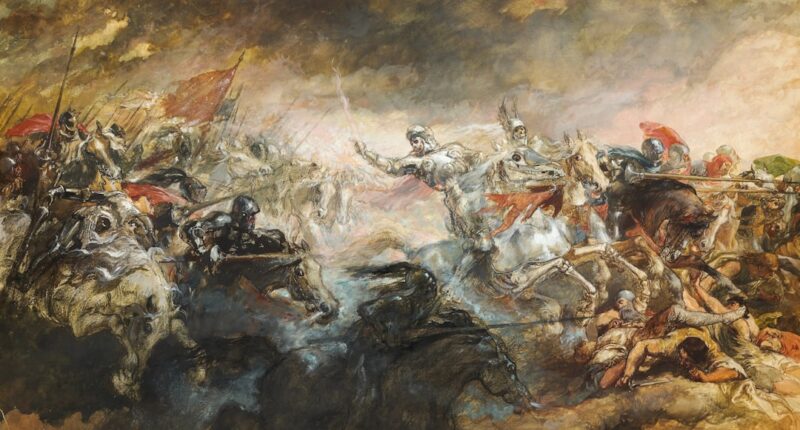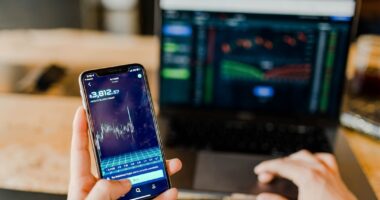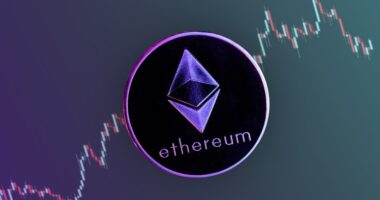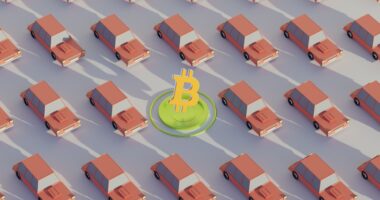Non-fungible tokens (NFTs) are digital assets that represent ownership or authenticity of unique items or content using blockchain technology. Unlike fungible cryptocurrencies such as Bitcoin or Ethereum, NFTs are non-interchangeable, with each token possessing distinct characteristics. This uniqueness contributes to their value and attractiveness to collectors and investors.
NFTs utilize blockchain technology to create a decentralized, transparent digital ledger that records ownership and transaction history. This system allows for public verification of authenticity and ownership, making counterfeiting or duplication extremely difficult. NFTs can represent various digital or physical assets, including artwork, music, videos, virtual real estate, and even social media content.
The buying and selling of NFTs typically occur on specialized online marketplaces called NFT platforms. Creators list their NFTs for sale, and buyers purchase them using cryptocurrency and digital wallets. This process has created new opportunities for content creators to monetize their work and for collectors to acquire unique digital assets.
In recent years, NFTs have gained significant popularity as a novel method for creators to engage with their audience and for buyers to invest in potentially appreciating digital assets. The technology’s impact on the art and entertainment industries is considerable, offering new avenues for creative expression and economic opportunities.
Key Takeaways
- NFTs are unique digital assets that are stored on a blockchain and cannot be replicated or replaced.
- NFT generators are important tools for creating and minting NFTs, allowing artists and creators to tokenize their digital work.
- Some top NFT generator tools include Rarible, OpenSea, and Mintable, offering various features and customization options.
- A step-by-step guide to using an NFT generator includes creating an account, uploading digital content, setting royalties, and minting the NFT.
- Tips for creating unique and marketable NFTs include focusing on originality, storytelling, and engaging with the community to build value.
- Legal and copyright considerations for NFT creation involve understanding ownership rights, licensing, and potential disputes over digital assets.
- The future of NFTs and the role of NFT generators is expected to continue growing, with potential for new applications in art, gaming, and virtual real estate.
Understanding the Importance of NFT Generators
Simplifying the NFT Creation Process
These platforms simplify the complex process of creating and selling NFTs, making it accessible to a wider audience of creators who may not have technical expertise in blockchain technology. By using NFT generators, creators can tokenize their digital content without having to understand the intricacies of blockchain technology or smart contracts.
Customization and Control
NFT generators often provide customizable options for creators to add metadata, royalties, and unlockable content to their NFTs, giving them more control over how their digital assets are presented and distributed. This allows artists to focus on their craft while leaving the technical aspects to the NFT generator platform.
Fueling the Growth of the NFT Market
The importance of NFT generators extends to the broader adoption of NFTs as a legitimate form of digital ownership and investment. As more creators utilize NFT generators to tokenize their content, the variety and quality of NFTs available on the market will increase, attracting more buyers and investors to the space. This growth in demand will further solidify the value and potential of NFTs as a new asset class, with NFT generators playing a crucial role in facilitating this expansion.
Top NFT Generator Tools for Creating Digital Collectibles

There are several top NFT generator tools available for creators looking to create digital collectibles. These platforms offer a range of features and customization options to suit different types of content and creators. Some of the top NFT generator tools include: 1.
Rarible: Rarible is a popular NFT marketplace that also offers an easy-to-use NFT generator for creators. The platform allows artists to upload their digital artwork, add metadata and unlockable content, and mint them as NFTs with customizable royalties. 2.
Mintable: Mintable is another user-friendly NFT generator that provides creators with the ability to mint, list, and sell their digital collectibles as NFTs. The platform offers features such as gas-free minting, customizable royalties, and the ability to create multiple editions of an NFT. 3.
OpenSea: OpenSea is one of the largest NFT marketplaces that also offers an NFT generator for creators. The platform supports a wide range of digital assets, including art, domain names, virtual worlds, and more. Creators can easily mint their content as NFTs and list them for sale on OpenSea’s marketplace.
4. Mintbase: Mintbase is a decentralized platform that allows creators to mint their digital assets as NFTs on the Tezos blockchain. The platform offers customizable templates for different types of content, as well as features such as royalties, unlockable content, and secondary sales.
These top NFT generator tools provide creators with the necessary tools and infrastructure to tokenize their digital collectibles and list them for sale on various marketplaces. Each platform offers unique features and benefits, allowing creators to choose the best fit for their specific needs and content.
Step-by-Step Guide to Using an NFT Generator
Using an NFT generator to create digital collectibles is a straightforward process that can be broken down into several key steps: 1. Choose an NFT Generator: The first step is to choose an NFT generator platform that best suits your needs as a creator. Consider factors such as supported content types, customization options, fees, and marketplace integration when selecting an NFT generator.
2. Upload Your Content: Once you have chosen an NFT generator, you can begin the process by uploading your digital content to the platform. This could be artwork, music, videos, or any other type of digital collectible that you want to tokenize as an NFT.
3. Add Metadata: After uploading your content, you will have the opportunity to add metadata such as title, description, and tags to your NFT. This information helps potential buyers understand the context and provenance of your digital collectible.
4. Customize Options: Many NFT generators offer customizable options such as royalties, unlockable content, and edition sizes. Take advantage of these features to add value and uniqueness to your NFTs.
5. Mint Your NFT: Once you have completed the necessary steps and customized your options, you can proceed to mint your digital collectible as an NFT on the platform. This process will create a unique token on the blockchain that represents ownership of your content.
6. List for Sale: After minting your NFT, you can list it for sale on various marketplaces supported by the NFT generator platform. This will make your digital collectible available for purchase by potential buyers using cryptocurrency.
By following this step-by-step guide, creators can effectively use an NFT generator to tokenize their digital content and enter the world of non-fungible tokens.
Tips for Creating Unique and Marketable NFTs
Creating unique and marketable NFTs is essential for attracting buyers and investors to your digital collectibles. Here are some tips for creators looking to make their NFTs stand out in a crowded marketplace: 1. Originality: Focus on creating original and unique content that sets your NFTs apart from others.
Whether it’s artwork, music, or any other type of digital collectible, originality is key to attracting buyers. 2. Storytelling: Use metadata and descriptions to tell the story behind your digital collectibles.
Buyers are often interested in the context and inspiration behind an NFT, so compelling storytelling can add value to your creations. 3. Quality: Ensure that your digital content is of high quality and resolution.
Buyers are more likely to invest in well-crafted and visually appealing NFTs. 4. Rarity: Consider creating limited editions or one-of-a-kind pieces to increase the rarity and exclusivity of your NFTs.
Scarcity can drive up demand and value for your digital collectibles. 5. Community Engagement: Engage with your audience and potential buyers through social media, forums, and other channels.
Building a community around your creations can help generate interest and demand for your NFTs. By following these tips, creators can increase the appeal and marketability of their NFTs, ultimately leading to greater success in the world of non-fungible tokens.
Legal and Copyright Considerations for NFT Creation

Ownership and Licensing Rights
Creators should verify that they have full ownership rights or appropriate licenses for the digital content they intend to tokenize as NFTs. This includes ensuring they have the right to sell or transfer ownership of the content.
Avoiding Copyright Infringement
It’s crucial to avoid using copyrighted material without permission when creating NFTs. Using copyrighted material without authorization can lead to legal issues and damage a creator’s reputation.
Smart Contracts and Legal Compliance
Creators should understand the terms and conditions of the smart contracts used by the NFT generator platform. Smart contracts may include provisions related to royalties, licensing rights, and transferability that could impact legal obligations as a creator. Additionally, considering seeking legal advice from an attorney with experience in intellectual property law can help ensure compliance with copyright laws and necessary rights to tokenize digital content.
The Future of NFTs and the Role of NFT Generators
The future of non-fungible tokens is promising, with continued growth expected in both adoption and innovation within the space. As more creators embrace NFTs as a means of monetizing their digital content, the demand for high-quality and unique digital collectibles will increase. This presents opportunities for artists, musicians, game developers, and other content creators to leverage NFT generators as a way to reach new audiences and generate revenue from their work.
NFT generators will play a crucial role in shaping the future of non-fungible tokens by providing accessible tools for creators to tokenize their digital assets without requiring extensive technical knowledge or resources. These platforms will continue to evolve with new features and integrations that cater to different types of content and creators, further expanding the diversity and quality of NFTs available on the market. Additionally, advancements in blockchain technology and smart contracts will likely lead to new use cases for NFTs beyond art and collectibles.
This could include applications in gaming, virtual real estate, identity verification, and more, opening up new opportunities for creators and investors alike. In conclusion, non-fungible tokens represent a significant shift in how we perceive ownership and value in the digital age. With the support of innovative NFT generator tools, creators have the opportunity to participate in this emerging ecosystem by minting unique digital collectibles that resonate with audiences around the world.
As the space continues to evolve, it’s important for creators to stay informed about best practices, legal considerations, and market trends in order to maximize their success in the world of non-fungible tokens.
If you’re interested in learning more about the world of NFTs and how they are revolutionizing the art world, check out this article on eth-news.com. It provides a comprehensive overview of the NFT market and how artists and creators are using NFTs to create and sell digital collectibles. This article will give you a deeper understanding of the potential of NFTs and how they are changing the way we think about ownership and value in the digital age.
FAQs
What is an NFT Generator?
An NFT generator is a tool or software that allows users to create their own non-fungible tokens (NFTs), which are unique digital assets that represent ownership or proof of authenticity of a specific item or piece of content.
How do NFT Generators work?
NFT generators typically provide a user-friendly interface where creators can upload their digital content, add metadata and attributes, and mint their own NFTs. These NFTs are then stored on a blockchain, such as Ethereum, and can be bought, sold, or traded like any other digital asset.
What kind of digital collectibles can be created with NFT Generators?
NFT generators can be used to create a wide range of digital collectibles, including artwork, music, videos, virtual real estate, in-game items, and more. Essentially, any digital content that can be tokenized and made unique can be turned into an NFT using these tools.
Are there different types of NFT Generators available?
Yes, there are various NFT generators available, each offering different features and capabilities. Some NFT generators are specifically tailored for artists and creators, while others may cater to businesses or developers looking to tokenize specific types of digital assets.
What are the benefits of using an NFT Generator?
Using an NFT generator allows creators to tokenize their digital content, establish ownership and provenance, and potentially monetize their work through the sale of NFTs. It also provides a way for collectors and fans to support their favorite creators and own unique digital collectibles.





